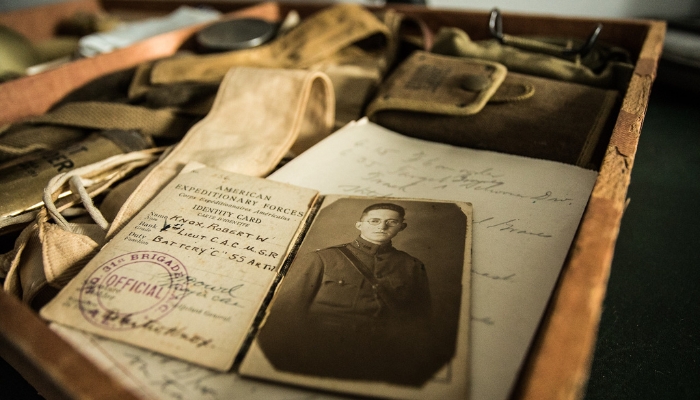
You’re tracing your family tree, but you’ve hit a wall. Don’t fret! Your ancestor’s Social Security Number (SSN) can be a crucial tool in your search.
To conduct a genealogy search by SSN, you can utilize the Social Security Death Index (SSDI) for individuals who have passed away, which will provide key details like birth and death dates and last known residence. However, privacy laws limit full SSN access for genealogy to 75 years after the individual’s birth or three years after death.
It’s not just a string of numbers; it’s a path leading back through time. But beware, while it’s a powerful resource, there are legal considerations to navigate. In this guide, we’ll explore the role of SSNs in genealogy and walk you through the legal and practical aspects of your search.
Table of contents
Understanding Social Security Numbers
Before you can effectively use a Social Security Number (SSN) in your genealogy search, it’s vital that you understand what these numbers are and how they’re structured. A SSN is a nine-digit number issued to U.S. citizens, permanent residents, and temporary working residents. The structure of the SSN can provide insights into the original application’s details, aiding in your family history search.
The first three digits, known as the area number, were assigned by geographical region at the time of the original application. The next two, the group number, were allocated in a specific, non-sequential order. The last four digits, the serial number, were issued consecutively within each group.
The Social Security Death Index (SSDI) is a database of death records created from the United States Social Security Administration’s death reports. Using the SSDI, along with a genealogy obituary search, you can uncover comprehensive details about individuals associated with a specific SSN, including their birth and death dates, last residence, or the location of the original application.
Importance of SSN in Genealogy

You can’t ignore the importance of a Social Security Number when you’re digging into your family’s past. This unique identifier can be a valuable tool in tracing your ancestors with names and building a comprehensive family tree.
The SSN can unlock a treasure trove of information in the form of birth records, death records, and other vital data about your kin. These records are meticulously maintained by the Social Security Administration, making them highly reliable for genealogical research. A name might be common, but an SSN is specific to an individual, eliminating the risk of mistaking someone else’s identity for that of your ancestor.
Additionally, the SSN can offer clues about an ancestor’s life. The first three digits, assigned by geographical region, can suggest where your ancestor lived when he or she received the number. It’s a small piece of the puzzle, but every detail counts when constructing an accurate family history.
Legal Aspects of SSN Searches
Where does legality fit into your search for ancestors using their Social Security Numbers? It’s crucial to understand the legal aspects of SSN searches before embarking on your genealogy search. As much as it’s a rich resource, misuse of this information can lead to legal ramifications.
Here are key legal aspects you need to consider:
- Accessing and using the SSNs of deceased individuals for genealogy research is legal. These are part of public records available through the Social Security Death Index.
- Unauthorized use of a living person’s SSN is illegal. You can’t use an individual’s SSN without their explicit permission.
- It’s unlawful to use SSNs obtained through illegal means. This includes buying, selling, or trading these numbers.
Being aware of these legal aspects ensures you stay within the boundaries of the law during your genealogy search. It also protects you from potential legal consequences. After all, your genealogy search should be a journey of discovery, not a legal minefield.
Now that we’ve explored the legal aspects of SSN searches, let’s dive into the practical steps to genealogy search.
Practical Steps to Genealogy Search

Moving on from the legalities, let’s now delve into the practical steps you’ll need to take in your genealogy search using a Social Security Number (SSN).
A vital genealogy search tip is to first gather as much information as possible about the person whose genealogy you’re researching. This should include the full name, date of birth, and most importantly, the SSN.
Next, you’ll want to access the Social Security Death Master File. This database contains the records of deceased individuals who’d an SSN and whose deaths were reported to the Social Security Administration. It can be a treasure trove of information for your genealogy search.
Afterwards, explore ancestry.com – US, where you can input the SSN to find additional records. Be patient, as this process can take time and may require multiple searches. Remember, you’re piecing together a puzzle, and each piece of information is valuable.
Lastly, don’t forget to verify your findings. Cross-check the information from different sources to ensure its accuracy. This is a vital step in any genealogy search.
With these practical steps, your journey into the past can begin. Next, we’ll look at some case study: success stories to inspire your search.
Case Study: Success Stories
Drawing from your newfound knowledge on genealogy search by SSN, let’s delve into some individuals’ fascinating success stories.
These case studies highlight the profound impact a social security number can have on tracing back one’s lineage.
- John’s Story: John had exhausted all conventional means, including surname search genealogy, in his quest to uncover his family history. With his great-grandmother’s social security number, he was able to trace her immigration records, which became his original source for discovering his German roots.
- Sarah’s Tale: Sarah, adopted at birth, knew nothing of her biological family. Her own social security number became the key to unlock her family history, leading her to a brother she never knew she had.
- Robert’s Journey: Robert’s family always had tales of Native American ancestry. Through his grandfather’s social security number, he was able to confirm this lineage, changing his perspective on his identity.
These success stories illustrate the power of the social security number as a unique identifier in genealogy search. It’s more than just a number; it’s a thread that weaves the tapestry of your lineage, connecting you to your past in a way that no other piece of information can.
Advanced Techniques in Genealogy Search

Genealogy can be like a complex puzzle. To piece together your family history, you often need more than just names and dates. Social Security Numbers (SSNs) can be a key part of this puzzle, especially when you cross-reference them with other genealogical databases.
Cross-Referencing SSNs with Other Databases
When you find a SSN on a deceased person’s documents, it’s like striking gold. This number can unlock a wealth of information. Here’s how to use it:
- Connect with Vital Records: Start by linking the SSN to birth certificates and death certificates. These documents can confirm a person’s birth city, parents’ names, and even maiden names for women, which are crucial for tracing lineage.
- Explore Military Connections: If your ancestor served in the military, their SSN could lead you to detailed military records. These records often include service time, location, and sometimes even personal letters.
- Utilize the Social Security Death Index (SSDI): The SSDI is a database that can help you find death index records. It’s a valuable tool for confirming a person’s SS-5 form, which is the application for a Social Security card.
- Check the National Technical Information Service (NTIS): This federal agency holds a file of death information that can be cross-referenced with SSNs to find death benefit paperwork and claims.
Tackling Incomplete or Erroneous Records
Not all records are perfect. Here’s how to deal with errors or gaps:
- Verify with Multiple Sources: If you find a death record entry that doesn’t seem right, check other sources like burial cards or newspaper obituaries to verify the information.
- Look for Patterns: Sometimes, ZIP codes or addresses over time can help you track a person’s movement and validate the information you have.
- Consult the Experts: Websites like Ancestry offer fee-based subscription services that can provide access to more comprehensive databases and featured search functions.
Tips from Professional Genealogists
Professionals in the field of genealogy have shared some insider tips:
- Use a Broad Time Frame: When searching databases, use a broad time frame to account for late 1980s record digitization or older tape formats.
- Understand the Codes: Learn what different letter codes on Social Security applications and claims mean. This can help you understand the type of benefits received, like retirement benefits or lump sum payments.
- Recognize the Importance of Women’s Records: Women’s records can be tricky due to married names and maiden names. Always check for all possible name variations.
- Don’t Ignore the Living: Sometimes, living relatives can provide additional details that aren’t found in public records. They can share personal stories and copies of family documents that fill in the gaps.
- Be Patient and Persistent: The claims process for obtaining official records can take time. Whether you’re requesting a Social Security card copy or a military service record, be prepared for a wait.
By using these advanced techniques, you can build a more complete and accurate family tree. Remember, genealogy is not just about collecting names and dates—it’s about understanding the stories and the lives behind them.
Conclusion
So, you’ve journeyed through the complex maze of genealogy search by social security number.
It’s clear, the SSN is the golden thread weaving through your ancestral tapestry. Legal obstacles might be stepping stones, but with care, you can navigate deftly.
The path to your past isn’t always straight, but with these practical steps, success is within reach. And remember, every success story began with a single step. Now, it’s your turn to step into the rich tapestry of your family’s past.
FAQs Section
Can I use a Social Security Number to research my family history?
Yes, a Social Security Number (SSN) can be a vital tool in genealogical research. It can help you access a deceased person’s SS-5 form, which is the application for their Social Security card and may contain valuable information such as their birth date, parents’ names, and birth city.
Where can I find a deceased relative’s Social Security records?
You can find a deceased relative’s Social Security records in the Social Security Death Index (SSDI), which is available online. This index includes death record entries that can provide information on the deceased person, including the SSN, age at death, and sometimes the last known mailing address.
Are there any restrictions on accessing Social Security records for genealogy?
Yes, there are restrictions to protect privacy. Recent records may not be publicly available, and you may need to provide proof of death such as a death certificate or an obituary to access certain details. Federal agencies and government agencies have specific rules about what information can be released and to whom.